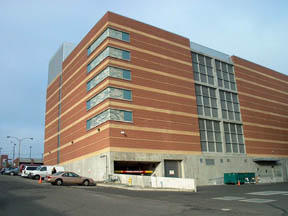Pierce Countys newly completed 1,000-bed Detention Facility Addition and 100-bed Juvenile Justice Center that opened in 1996 are recognized in the Justice Facilities Review published by the Committee on Architecture for Justice and the American Institute of Architects.
A total of 98 projects were submitted for consideration and 60 were selected by a seven-member jury for inclusion in the review.
The projects so honored cannot be merely examples of architectural excellence; they also need to be highly functional, secure, efficient to build and operate and represent advanced justice planning principles and practices, according to the Review.
Both facilities were designed by The McGranahan Partnership, a Tacoma architectural firm.
ABOUT THE FACILITIES
The jail addition contains new intake-release, central control and food and laundry units.
Areas in the old jail will be reconfigured as an expanded infirmary and program and special management units.
The old and new units will operate as one integrated facility. The biggest challenge was meeting both a severely restricted budget and American Correctional Association and consent decree standards.
The simple and efficient plan makes every square foot count. A huge window wall between the dayroom and secure recreation yards brings in a great deal of natural light.
The yards face the existing jail to eliminate visual and sound communication.
Exterior design focused on being a good neighbor by fitting into and complementing the surrounding brick warehouses and apartments.
The juvenile facility expanded and replaced detention areas and courts.
The housing units integrate living, school, program and recreation activities in a comfortable, daylight-filled environment.
Also included were new admitting, visiting, recreation, medical and staff facilities.
The plan provides for staff and space efficiency and multiple uses of spaces, such as a central visiting area that also is used for court staging.
A new lobby serves courts and detention. The design creates a new public image for juvenile justice.
The selected projects were included in a traveling exhibit that was displayed at the ACA Congress of Correction in San Antonio, The American Jail Association Annual Conference in Columbus, Ohio and the AIA/CAJ Conference in Charlotte, N.C., various universities and several regional and local professional academic meetings.





